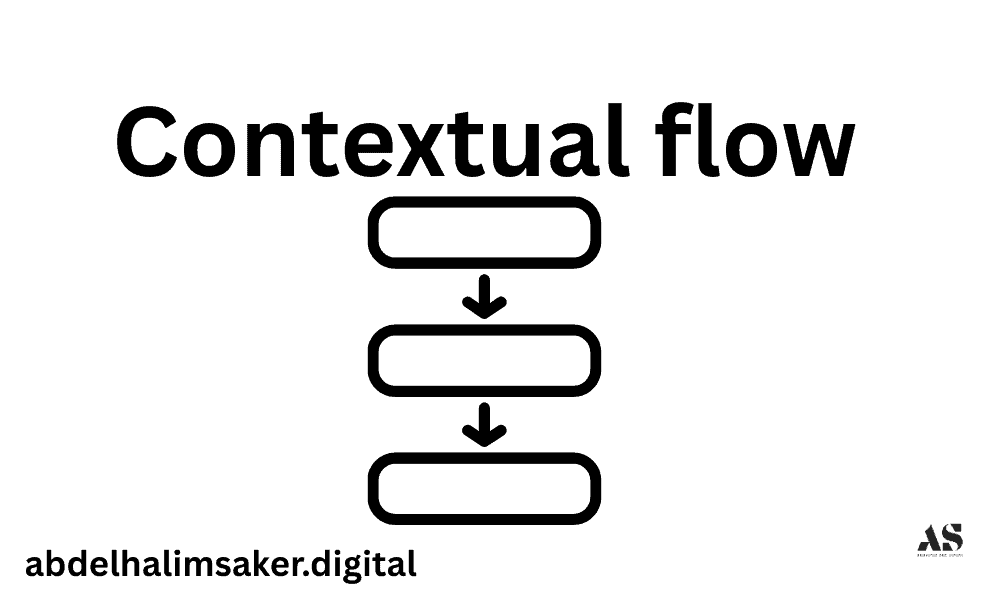
Contextual flow is the logical and semantic sequence of meaning that connects every part of a document. It defines how ideas, entities, and predicates progress from the introduction to the final section, creating a coherent path of understanding.
In Semantic SEO, contextual flow determines how both users and search engines interpret meaning. A well-structured flow enables Google’s NLP models to read your content as a hierarchical semantic network, not isolated sentences.
When contextual flow is consistent, Google perceives your content as topically complete, increasing its likelihood of being ranked for related queries.
Why Contextual Flow Determines Comprehension
How does contextual flow affect comprehension?
Contextual flow ensures that ideas follow a logical sequence, where every new concept builds upon the previous one.
For users, it simplifies cognitive processing — each paragraph feels like a natural extension of the last.
For Google, it allows machine learning models (like BERT and MUM) to extract structured meaning, identify entities, and determine topic centrality.
Without contextual flow, your page becomes semantically fragmented, reducing both user retention and algorithmic comprehension.
Strong contextual flow = predictable semantic order → higher relevance and readability.
The Components of Contextual Flow
Contextual flow is built through three interconnected components:
- Order – the logical sequencing of topics.
- Continuity – the smooth transition of meaning between sentences.
- Predicate Alignment – the consistent use of verbs or actions that maintain thematic coherence.
| Component | Function | Example | SEO Benefit |
|---|---|---|---|
| Order | Defines progression of meaning | “From Semantic SEO → to Entity SEO → to Topical Authority” | Improves hierarchical comprehension |
| Continuity | Links sentences conceptually | “This process strengthens Google’s entity graph understanding.” | Enhances dwell time and flow perception |
| Predicate Alignment | Keeps verbs semantically consistent | “builds, connects, enhances” | Reinforces contextual unity |
How Heading Hierarchy Reflects Flow
How do headings control contextual direction?
Headings act as semantic signposts. They organize ideas hierarchically, allowing both readers and algorithms to follow topic transitions without losing meaning.
Example structure with contextual progression:
- H1: What Is Contextual Flow in Semantic SEO
- H2: Why Contextual Flow Determines Comprehension
- H3: How Heading Hierarchy Reflects Flow
- H3: How Sentences Maintain Coherence
- H2: How to Build Contextual Flow in Articles
This hierarchy demonstrates macro → micro flow: broad definitions lead into specific mechanisms.
Headings should represent semantic boundaries. When your H2s and H3s share common entities and verbs, Google recognizes a unified discourse structure, improving content interpretability.
How Sentences Maintain Coherence
Each sentence must logically connect to its predecessor through shared entities or attributes.
Example:
- “Semantic SEO improves how Google interprets meaning.”
- “This improved interpretation enhances entity relationships.”
Here, the entity Semantic SEO flows into entity relationships — maintaining semantic continuity.
NLP models like BERT and PaLM use token chaining to detect these relationships. Sentences that lack coherence break the flow, causing semantic leakage — when Google can’t associate content sections effectively.
Coherent sentences = stronger topic recall and better passage indexing.
How to Build Contextual Flow in Articles
How do you structure a page with strong contextual flow?
The key is to progress from macro meaning (general context) to micro semantics (specific entity relationships).
Step-by-Step Context Flow Design
- Start with Macro Meaning (H1–H2):
- Define the central entity and its purpose.
- Example: “What Is Semantic SEO?” establishes topic scope.
- Expand into Sub-Entities (H3):
- Introduce related but narrower topics (e.g., “Entities,” “Attributes,” “Values”).
- Use Predicate Continuity:
- Keep verbs consistent (e.g., “connects,” “supports,” “builds”).
- Maintain Contextual Bridges:
- End each section with a link or sentence that previews the next.
- Example: “This foundation enables contextual flow, which we explore next.”
- Apply EAV Structuring:
- Every paragraph should contain an Entity–Attribute–Value pattern to maintain logical sequence.
- Interlink Related Pages:
- Link outward to semantically related entities like “Topical Authority” or “Entity SEO.”
Following this structure ensures that both humans and algorithms perceive your content as contextually linear.
Tools to Analyze Contextual Flow
Which tools help evaluate contextual flow?
Several NLP and SEO tools assess semantic coherence, entity chaining, and topical order.
| Tool | Function | Measurement |
|---|---|---|
| Google NLP API | Identifies entities and dependencies | Checks entity continuity |
| TextRazor | Extracts semantic relationships | Analyzes predicate alignment |
| SurferSEO NLP Audit | Measures topic order and keyword proximity | Detects logical breaks |
| Coh-Metrix | Calculates textual coherence score | Quantifies readability flow |
| InLinks Topical Map Visualizer | Maps entities and internal link relations | Reveals topic sequence and gaps |
These tools show semantic density, topic drift, and relationship strength between paragraphs.
A high coherence score indicates that your document maintains consistent contextual direction, which aids query satisfaction prediction in Google’s models.
Common Context Flow Breaks (and Fixes)
Which problems disrupt contextual flow, and how can you repair them?
| Issue | Description | Solution |
|---|---|---|
| Topic Jumping | Introducing unrelated topics without transition | Use bridge sentences that connect old and new entities |
| Predicate Inconsistency | Changing verbs or tones mid-topic | Standardize action verbs for similar concepts |
| Weak Heading Logic | Headings that don’t align with topic hierarchy | Reorganize headings using entity relationships |
| Semantic Isolation | Sentences without shared entities | Reinforce with contextual references |
| Keyword Repetition | Over-optimization leading to broken narrative | Replace redundant terms with synonyms or entity equivalents |
Example of a repair:
Weak flow: “Entity SEO improves rankings. Schema markup is useful. Topical maps connect meanings.”
Fixed flow: “Entity SEO improves rankings because schema markup defines entities. These definitions strengthen topical maps that connect meanings.”
The second version preserves semantic causality and builds EAV continuity.
Why Contextual Flow Strengthens Semantic Authority
Contextual flow enhances semantic authority because it creates a predictable knowledge structure.
Google rewards pages that show:
- Sequential meaning development (macro → micro).
- Entity repetition with variation (semantic reinforcement).
- Predicate alignment (consistent action flow).
Such documents form cohesive topic graphs, where each section supports the next, leading to higher comprehension, longer dwell time, and improved Topical Authority across the cluster.
